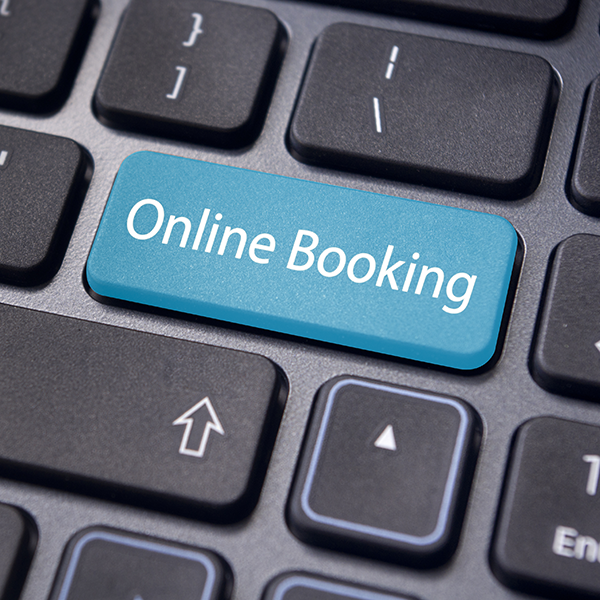5 Digital Trends Impacting the Travel Industry

By Paige O'Neill, CMO of SDL
Looking back a decade, the travel landscape has evolved beyond recognition.
For global travel companies hoping to stand out from the crowd and really capture consumers' attention, they must address the points of friction slowing down a customer's journey. Travel professionals must satisfy the needs of passengers and guests both in person and online, in real-time and across multiple languages. That means ensuring a seamless, consistent experience across channels and interactions. To achieve this, brands must adjust their strategies as customer behavior and preferences evolve. Keeping the following five digital travel trends in mind will help.
1. Digital Self-Service
Consumers today are using digital tools to jump across industry-defined silos - moving seamlessly from tourism sites, online travel agencies, tour operators and hotel and airline booking tools - without ever stopping to ask for directions. With the ascent of the silent digital traveler, real human service and interactions fade in importance. Considering that travelers gather information on one channel, book on another and expect service on yet another, omnichannel experiences must be seamless.
Depending on an organization's go-to-market strategy, the key is to garner travelers' attention long enough on any one channel for them to book through the channel of choice to increase profit margins while simultaneously enhancing travelers' experiences. To fully capitalize on this opportunity, travel organizations should offer an online experience that delivers the same great level of hospitality that their physical properties provide. Achieving this requires alignment with visitor expectations, offering a rich, contextual experience in the traveler's language and on the device of their choosing.
2. Personalization Based on Preference
With so many hotel rooms, airline seats and restaurant tables to choose from, it's critical for brands to optimize their offerings. Travelers are overwhelmed by choices online. An increasing amount of choices need to be served up in a format that encourages travelers to remain on their buying journey with the brand. By using data collected online about travelers, sites can deliver targeted information that consumers crave. Showing images of properties, details about amenities, all based on the traveler's demographics, navigation choices and other digital clues, is the first step to delivering a curated experience. For example, travelers seeking luxury couples-only vacation rentals can skip wading through countless listings of family-friendly properties to focus on the high-end, all-inclusive resort that fits their needs.
3. Social Amplification
The amount of user-generated content being created today is growing exponentially. Positive reviews increase the likelihood for travelers to choose a brand. However, translating millions of conversations of review content into the languages of all potential travelers poses a major challenge. Machine translation technology provides a cost-effective option for translating user reviews - especially if the engine is pre-trained and pre-populated with travel and hospitality specific terms. Another tactic is to utilize social analytics tools to analyze user-generated content, such as online reviews, and convert them into actionable metrics and insights. For example, if a cruise line notices that guests staying in balcony cabins give the brand a higher rating on review sites, it may decide to add more rooms with balconies.
4. Mobile Disruption
Travelers are increasingly researching and looking up information about their trips via mobile devices. Keeping this in mind, the way travel suppliers interact with customers before, during and after their trips needs to keep pace with innovation. As a result, responsive design should be a priority. This includes integrating booking functionality into mobile offerings, and addressing multiple display and connection speeds for varying devices when coping with volume and velocity of information consumption. In other words, travel companies must deliver new ways for traveler's to have a self-guided journey that converts across multiple mobile devices. All of this gives travelers more control over their experience. Whether they are ordering room service while in a meeting or booking a flight on the way to the airport, they can choose how their experience will unfold from a device that they can carry in their pocket.
5. Digital Experience Optimization
As consumers seek an efficient way to make sense of the market, travel metasearch will grow. No wonder Priceline acquired Kayak, Expedia bought Orbitz and took over Travelocity and TripAdvisor rounded out its user reviews with a hotel-comparison shopping engine. Fueling this trend, travelers (especially millennials) are increasingly researching their travel via metasearch rather than traditional online travel agencies or brand site navigation. This means that travel brands must think beyond listings and factor in the need to communicate in a cultural context to deliver on global traveler expectations. Localizing search results - both internal and on engines such as Google and Yahoo - is one such way to deliver a more native experience to the consumer. To achieve this in multiple languages requires search term translation in metadata. For instance, "comfort" in one culture may mean a well-appointed large room, while in another it may mean a soft bed in a cozy room.
To succeed in today's marketplace, travel brands must look to deliver on these trends. This is no small feat, as one trend adds to the complexity of the next. This is further compounded by the fact that travel companies must address these trends on their own sites as well as on the third-party sites presenting information about them. Travelers will ultimately choose the brands who prioritize the customer experience through an omnichannel strategy, taking the necessary steps to understand customers and cater to their preferences.
About the Author
As Chief Marketing Officer of SDL, Paige brings almost 20 years of experience in senior marketing roles. She uniquely combines product-marketing expertise with an extensive background in communications and PR and a passion for developing thought leadership programs that build strong awareness and differentiate companies from the competition.








